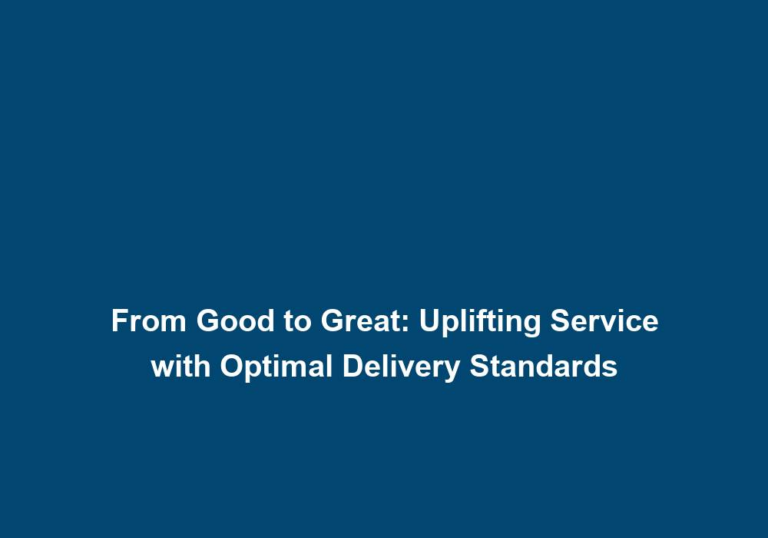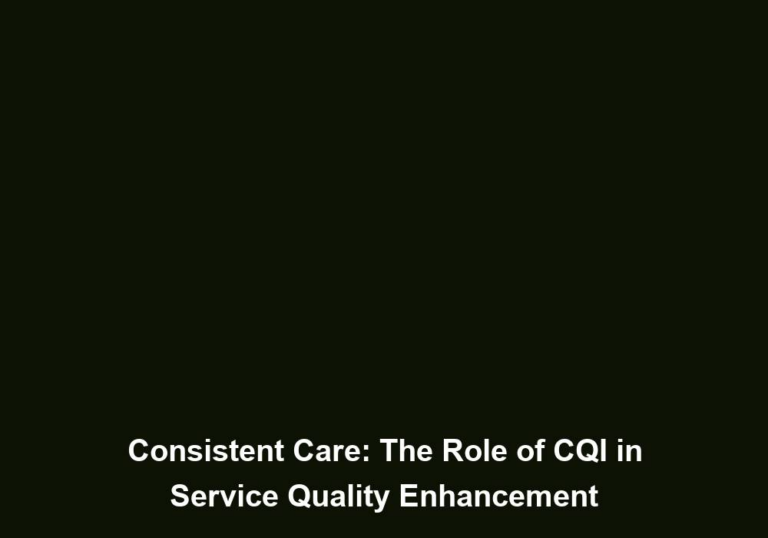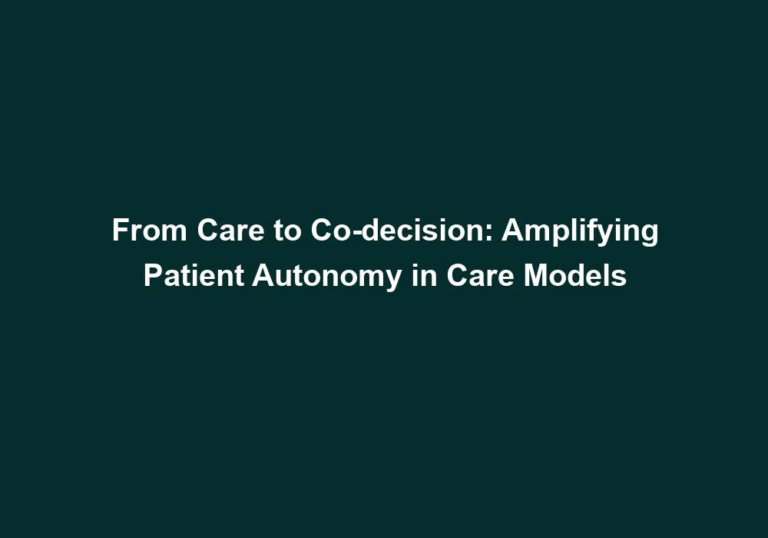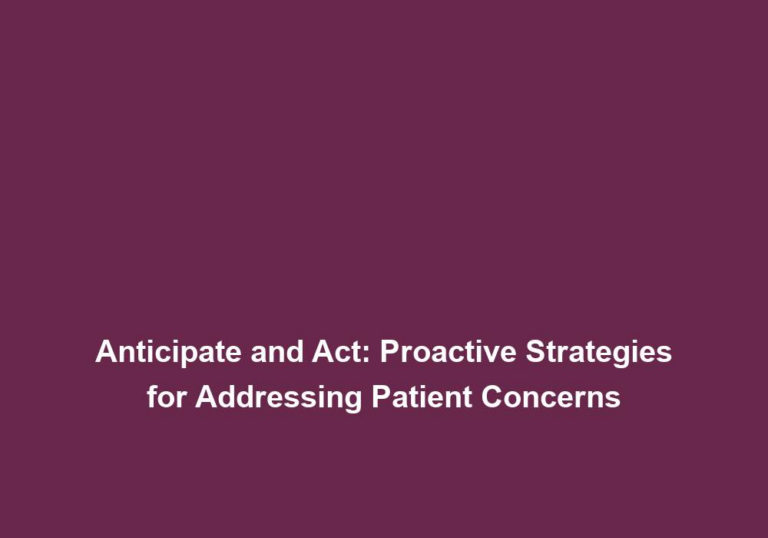Empowering Voices: Prioritizing Patient Feedback in Medical Practices
In the ever-evolving field of healthcare, patient feedback has become an invaluable tool for medical practices to enhance their services and improve patient satisfaction. Recognizing the significance of patient voices, medical practices are now actively prioritizing patient feedback, allowing for a more patient-centered approach to care. In this article, we will explore the importance of patient feedback in medical practices and discuss strategies to empower patients to share their experiences.
Why is Patient Feedback Important?
Patient feedback plays a pivotal role in shaping the quality of care provided by medical practices. It provides valuable insights into the patient experience, enabling healthcare providers to identify areas of improvement and develop targeted solutions. By actively seeking patient feedback, medical practices can:
- Enhance Patient Satisfaction
Patient feedback allows medical practices to gain a deeper understanding of their patients’ needs and expectations. By addressing concerns and implementing changes based on feedback, practices can significantly improve patient satisfaction levels. For example, if patients consistently provide feedback about long wait times, the practice can implement strategies to streamline appointment scheduling, reduce wait times, and improve overall patient satisfaction.
- Improve Service Quality
Patient feedback serves as a powerful tool for medical practices to identify areas where their services may fall short. It enables practices to make necessary changes, improve service quality, and enhance patient outcomes. For example, if patients consistently express dissatisfaction with the communication between healthcare providers and themselves, the practice can implement training programs to improve communication skills and ensure better patient-provider interactions.
- Build Patient Trust
Encouraging patient feedback demonstrates a commitment to patient-centered care and fosters trust between medical practices and their patients. This trust can lead to stronger patient-provider relationships, increased patient loyalty, and positive word-of-mouth referrals. When patients feel that their opinions are valued and their feedback is acted upon, they are more likely to trust the practice and feel confident in the care they receive.
Strategies to Empower Patient Feedback
To effectively prioritize patient feedback, medical practices should implement strategies that empower patients to share their experiences openly and honestly. Here are some actionable steps to achieve this:
1. Create a Culture of Open Communication
Establishing a culture of open communication is essential for encouraging patient feedback. Medical practices should actively communicate to patients that their opinions are valued and that their feedback can drive positive change. This can be done through various means, such as:
-
Patient Surveys: Conducting regular surveys to gauge patient satisfaction and gather specific feedback on their experiences can provide invaluable insights. Surveys can cover various aspects of the patient experience, including wait times, communication, cleanliness, and overall satisfaction. By analyzing the survey results, medical practices can identify areas for improvement and take appropriate actions.
-
Anonymous Feedback Channels: Offering anonymous feedback channels, such as suggestion boxes or online forms, can encourage patients to share their thoughts without fear of judgment or repercussion. This anonymity allows patients to provide honest feedback, enabling the practice to address any issues or concerns and make necessary improvements.
-
Open Door Policy: Medical practices can adopt an open-door policy, where patients are encouraged to approach healthcare providers with any feedback or concerns. This approach creates a safe and welcoming environment for patients to voice their opinions and ensures that their feedback is heard and taken into consideration.
2. Implement Patient Advisory Committees
Patient advisory committees can serve as a bridge between medical practices and their patients. These committees, comprising a diverse group of patients, can provide valuable perspectives and recommendations on various aspects of care delivery. By involving patients in decision-making processes, medical practices can ensure that patient feedback is at the forefront of their improvement efforts. Patient advisory committees can meet regularly to discuss patient concerns, review feedback, and collaborate on solutions. Their input can help medical practices make informed decisions and prioritize improvements that align with patient needs and expectations.
3. Utilize Technology for Data Collection
Leveraging technology can streamline the collection and analysis of patient feedback. Some effective tools and platforms include:
-
Online Feedback Portals: Implementing online portals where patients can provide feedback and rate their experiences in real-time can significantly enhance data collection and analysis processes. These portals can be integrated into the practice’s website or mobile app, allowing patients to conveniently share their feedback at any time. The feedback collected can be used to identify trends, track satisfaction levels, and monitor the impact of implemented changes.
-
Social Media Listening: Monitoring social media platforms for patient feedback can help medical practices gather unfiltered and timely insights. Engaging with patients on social media creates an opportunity for open dialogue and demonstrates responsiveness. By actively listening to and addressing patient concerns shared on social media, medical practices can show their commitment to patient satisfaction and build a positive online reputation.
4. Provide Timely and Transparent Responses
Promptly addressing patient feedback is crucial to demonstrate the value placed on patients’ voices. Medical practices should establish protocols to ensure that all feedback is acknowledged, thoroughly reviewed, and followed up with transparent responses. This approach not only shows patients that their feedback is taken seriously but also provides an opportunity for clarification and resolution. When patients receive timely and transparent responses to their feedback, it reinforces their trust in the practice and encourages ongoing engagement.
5. Use Feedback to Drive Improvement
Patient feedback should not be viewed as mere data collection; it should be the driving force behind continuous improvement efforts. Medical practices should actively analyze feedback, identify recurring themes or issues, and develop action plans to address them. Regularly communicating these improvements to patients can foster a sense of partnership and collaboration. For example, a practice can send out newsletters or create a dedicated section on their website to update patients on the changes implemented based on their feedback. This transparent and proactive approach shows patients that their voices are heard and that their feedback leads to tangible improvements in the care they receive.
Conclusion
Empowering patient voices and prioritizing their feedback is crucial to delivering patient-centered care in medical practices. By actively seeking and valuing patient feedback, medical practices can enhance patient satisfaction, improve service quality, and build trust. Implementing strategies such as creating a culture of open communication, establishing patient advisory committees, utilizing technology for data collection, providing timely responses, and using feedback to drive improvement can help medical practices achieve these goals. Embracing patient feedback as an integral part of the healthcare ecosystem creates a virtuous cycle, leading to better outcomes for both patients and medical practitioners.






